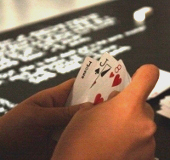As I continued with my research, it became clearer that, on a number of levels, it was possible to conceive of the games I had constructed as self-regulating systems. Rather than viewing the construction of fairness as an intervention from outside, it could be viewed as inherent to the game form, with the behaviours of those both in and out the game tending to conform to the system they find themselves in.
This analogy between fairness in games and self-regulating systems is by no means superfluous, not least if we consider fairness in the light of political liberalism. Indeed, the liberal John Rawls has it that ‘justice is fairness’ and its construction marks the prime index of the legitimacy of a political system. Otto Mayr traces the formulation of the concept of the self-regulating system within political liberalism as pre-dating its widespread physical application in systems such as the steam engine governor.1 Nonetheless what “gave coherence to the liberal conception of order was the concept of self-regulation, and this is, above all, a technological concept.”
Nonetheless this analogy does not apply to their relationship with the future. The self-regulation of the governor or the thermostat needs only be employed until its task is done; the self-regulation of society and the market economy is intended to last into perpetuity; the self-regulation of the game is intended to continue until a definite end point, preferably one side’s victory and another’s defeat.
 Errant Gaming
Generative disruptions to game mechanisms. Part of the 'Jokes in Systems' series.
Errant Gaming
Generative disruptions to game mechanisms. Part of the 'Jokes in Systems' series.